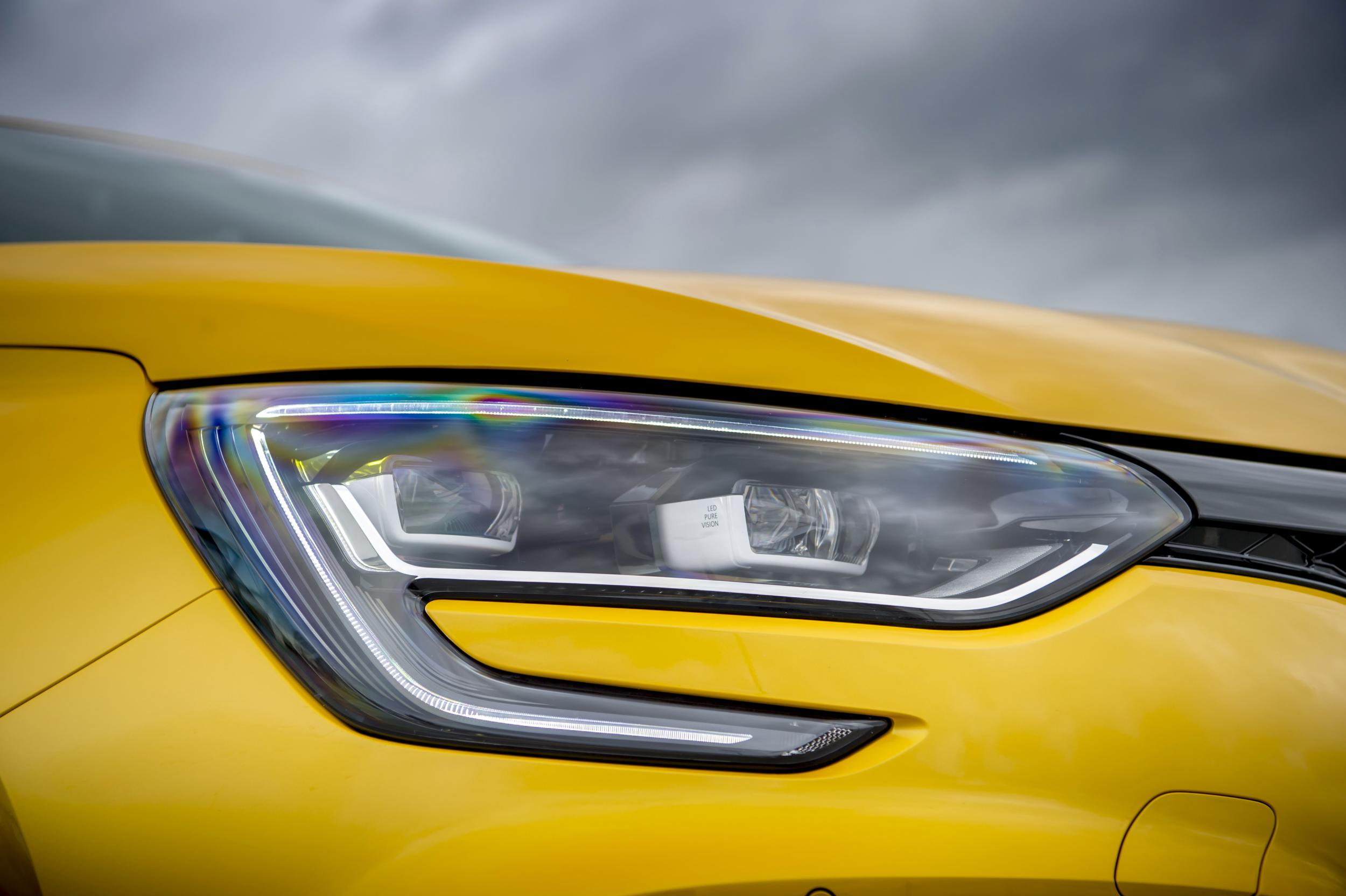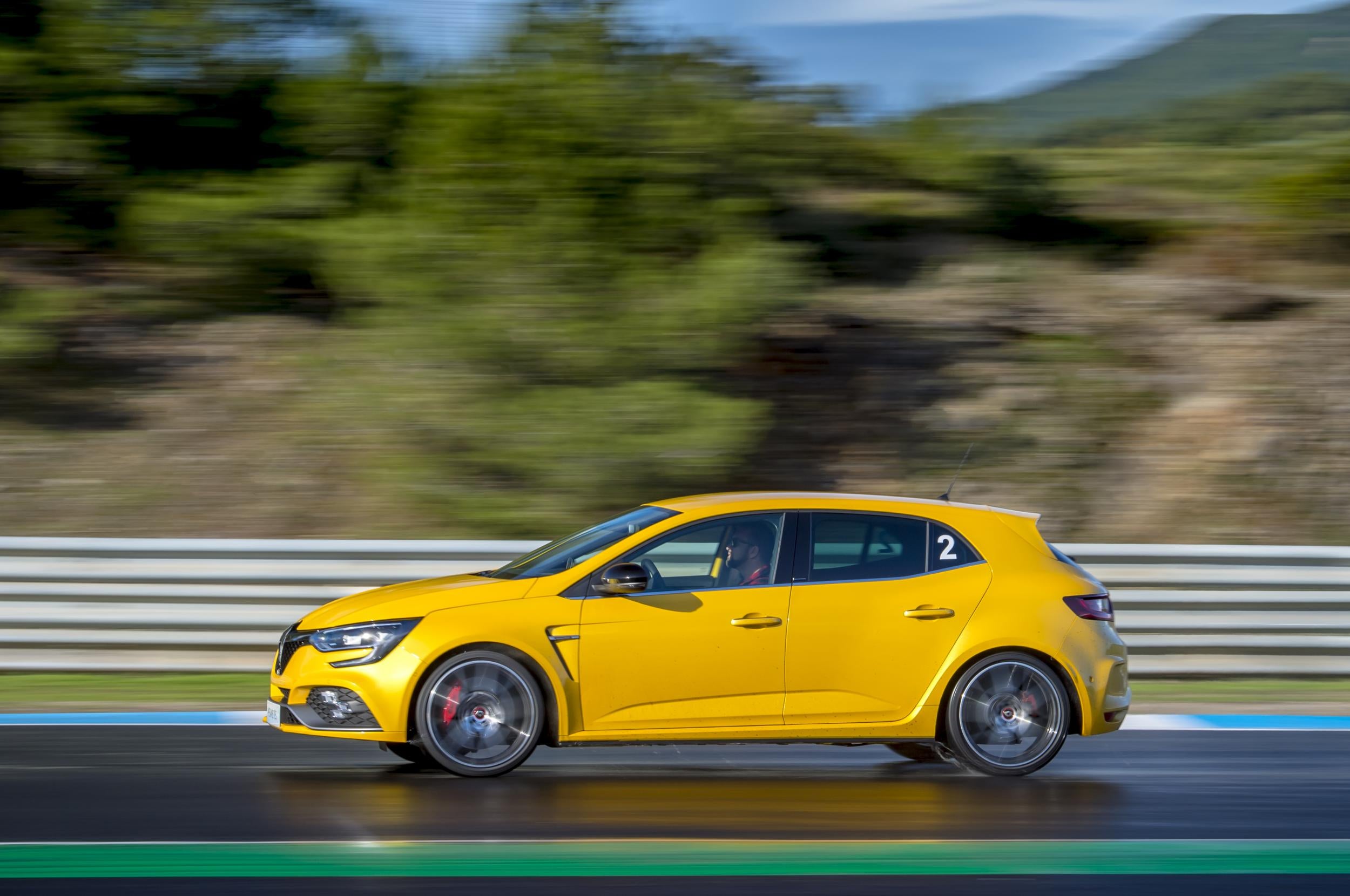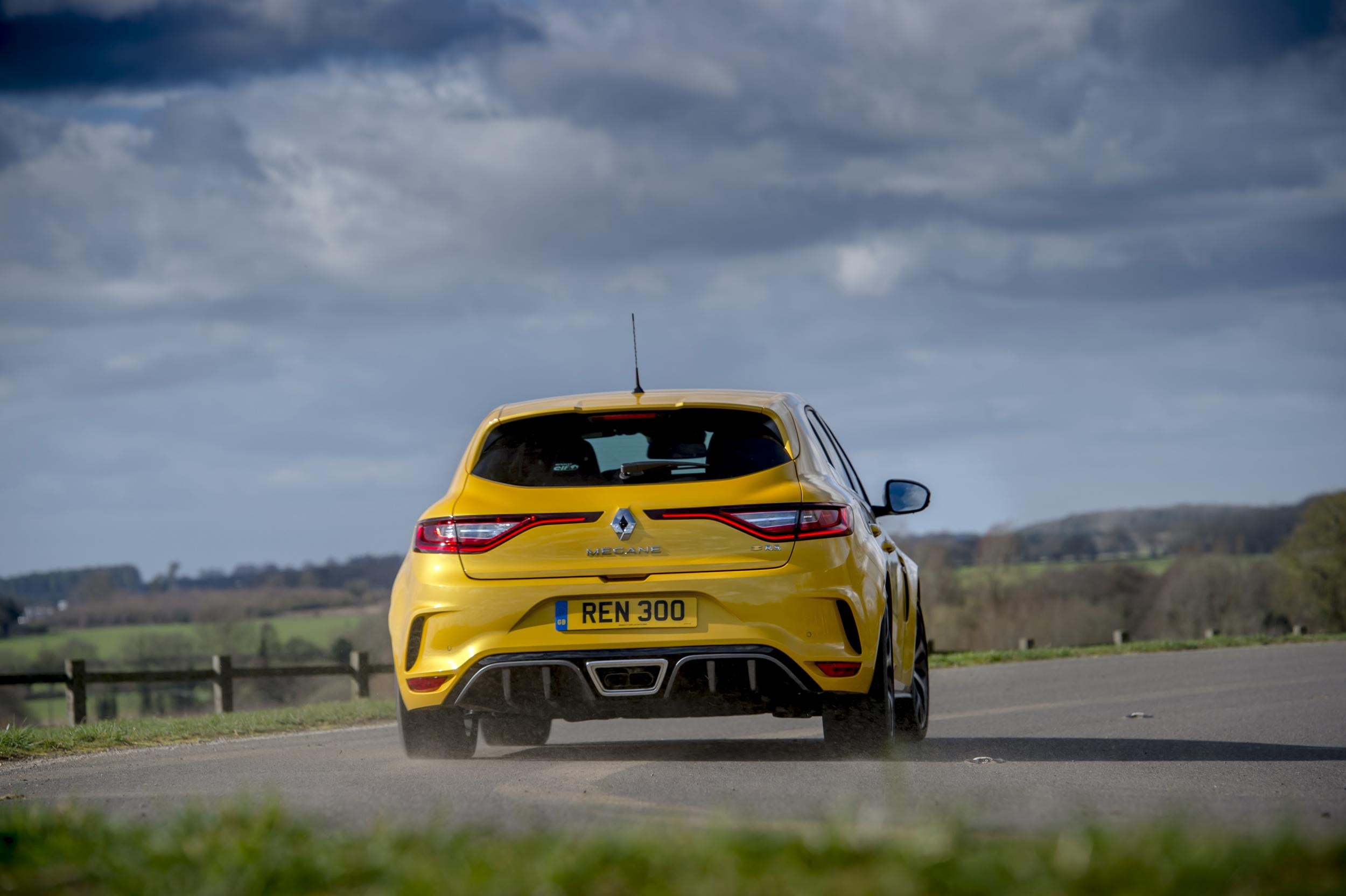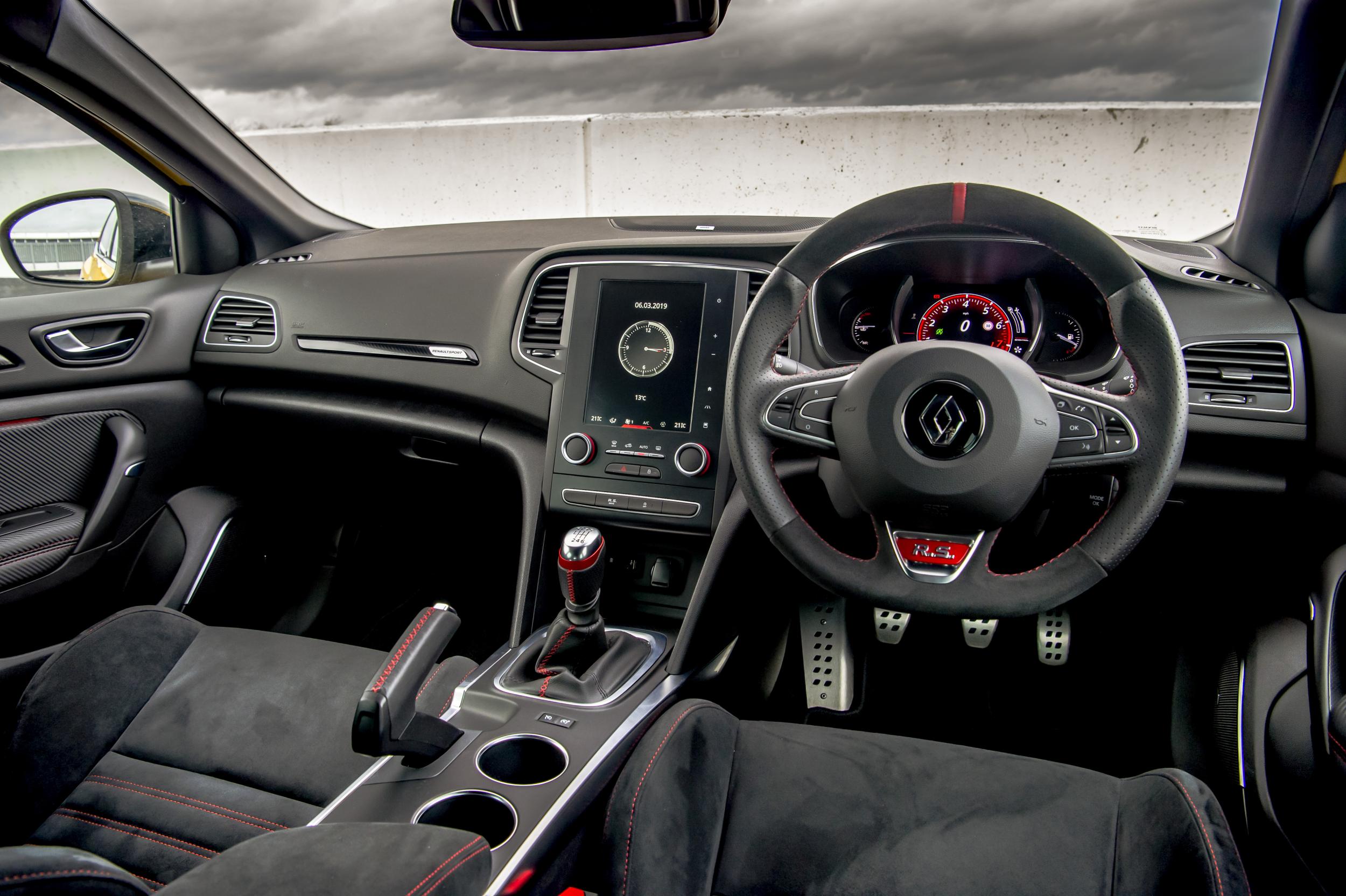
The Renault Megane RS 300 Trophy is the sort of car that likes to be boss. It drives you, rather than the other way around, and in a very bossy way. When you get in it, and before you even press the ignition, it does a little welcome routine – some grumbly car noises with a couple of heartbeats, as if it were alive and you’re in the very belly of the beast. Not like Herbie, because obviously the car doesn’t drive itself, but animated nonetheless, a little portentous. It is a beguiling blend – 300 horsepower RenaultSport engine (hence the name – RS 300); tuned chassis with limited-slip differential; four-wheel steer system; Bose sound system with 7 speakers; “high performance” lighting system; “Bi-Material” lightweight brakes; aluminium pedals; Recaro “racing” seats trimmed in Alcantara (faux suede); ceramic ball bearings in the turbocharger…

It’s almost alive, the way it takes charge on the road. It’s in charge. So you have to try to retrain it, both for the sake of road safety and civility to other road users, and to save your driving licence. Usually when people tell the police that they were speeding because they couldn’t help it is a lame excuse. It would still be scant defence for a Megane Trophy driver, but I’d be more inclined to understand it.

The Megane doesn’t boast a full-time four-wheel drive system as, say, an Audi RS3 does, but you really don’t miss that, such is the sophisticated mix of electronics and mechanical bits working their magic. Providing you can form a consensus and compromise with this monster Megane about where you want to go and how to get there, progress is swift, rather like Brexit might be if such an unlikely cross-party alliance were forged. Unlike the parliamentary Conservative Party, it can be positioned with great precision.

Years ago cars such as this Megane – plus its current competitors such as the Honda Civic Type R, Seat Leon Cupra R and various VW Golf GTI variants – would have been regarded as impossible to engineer: so much power trying to hit the ground via just the front wheels, which also have to do the steering. You’d have been left with something that scrabbled for grip, would refuse to steer, and generally have been as unruly as Donald Trump. Electronics has changed every assumption about the front-drive sports car. Today’s hot hatches are about twice as powerful and rapid as their granddads from the 1980s, but vastly more controlled, more refined and more reliable. Yes they growl – that is part of the fun – and the exhaust will pop a little if you hit the pedals and opt for ever more sporty settings. However, once you learn to respect it, you never feel that the car is going to get you into trouble.
The spec
Renault Megane RS 300 Trophy
Price: £36,085 (as tested; starts at £31,835)
Engine capacity: 1.8-litre petrol; 4-cylinder; 6-speed manual
Power output (hp): 300 @ 6,000 rpm
Top speed (mph): 162
0-60mph (seconds): 5.7
Fuel economy (mpg): 34.4
CO2 emissions (g/km): 183
This Megane was one of surprisingly few test cars I felt sad about handing back. I liked it, and much more than any Renault since the weird little single-seat electric Twizy. The only disappointment was the interior controls. Renault has a thing about minimising and decluttering its cabins, like it was the paramilitary wing of Ikea, so now everything has to be done via a touchscreen, which is a mistake for the air-con settings, for example, and anything else you need sort out in a hurry on the move. I also found the stop-start function, which cuts the engine at the lights to save fuel, occasionally more stop than start. Stalling a car as ostentatious as this is acutely embarrassing.

For me, the design strikes just the right balance between showing off (old gold paintwork, like it was a mascot for Wolverhampton Wanderers; diamond cut 19-inch alloys; red brakes and body kit) and the basically dull looks of a standard Megane, sadly a bit of a minor player in the Golf/Focus segment these days. This RenaultSport version is designed to show that the Megane isn’t necessarily boring – true enough – and that Renault can build a car every bit as exciting as anything knocked out by Porsche, which is also true. At £36,000, though, it would have to be. It’s quite a fee to visit what is essentially a dominatrix on four wheels.







